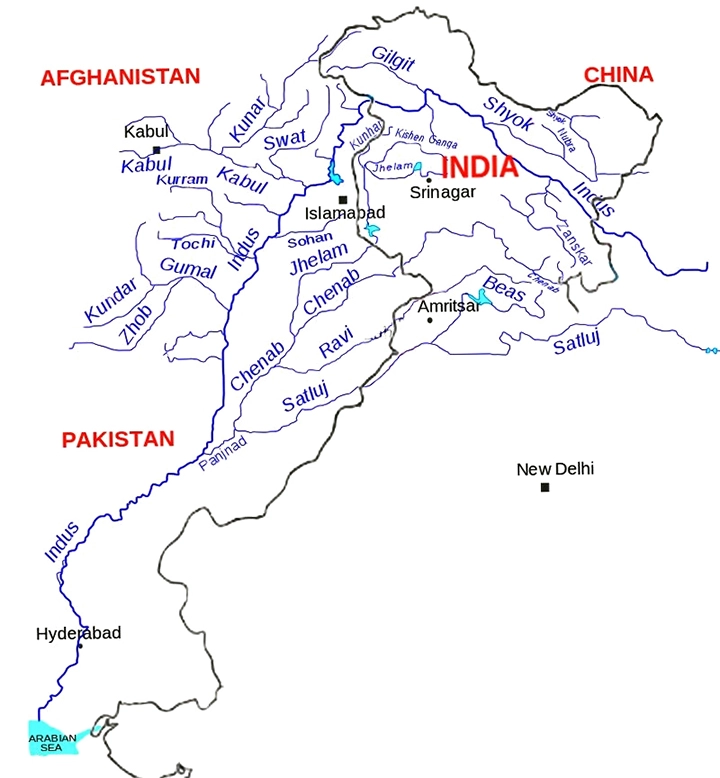Context:
The Cabinet Committee on Economic Affairs (CCEA) has approved the 540-megawatt Kwar hydroelectric project on the Chenab in Kishtwar district of Jammu and Kashmir.
Relevance:
GS III- Indian Economy (Infrastructure)
Dimensions of the Article:
- What is the Kwar Project?
- Chenab River
What is the Kwar Project?
- This project, which is part of the Indus basin, is one of at least four planned in the district, including the 1,000 MW Pakal Dul hydroelectric project and the 624 MW run-of-river Kiru hydroelectric project.
- The Indus Water Treaty (IWT) between India and Pakistan, signed in 1960, divides the waters of six Indus basin rivers that flow through India and into Pakistan.
- India has entire control over the Sutlej, Beas, and Ravi rivers in the east, while Pakistan controls the Chenab, Jhelum, and Indus rivers in the west.
- Chenab Valley Power Projects Private Ltd (CVPPL), a joint venture between NHPC Ltd and Jammu & Kashmir State Power Development Corporation, will develop the Kwar project (JKSPDC).
- In a 90 percent dependable year, the project is estimated to produce 1975.54 million units.
- Approximately 2,500 people would be employed directly and indirectly as a result of the Project’s construction activities.
Chenab River

- It rises in the Himachal Pradesh state’s Lahaul and Spiti district in the upper Himalayas.
- The river is produced by the confluence of two rivers, Chandra and Bhaga, near Tandi, in the Lahaul and Spiti district, 8 kilometres southwest of Keylong.
- Surya taal lake, located a few kilometres west of the Bara-lacha la pass in Himachal Pradesh, is the source of the Bhaga river.
- The Chandra river rises from the same glaciers east of the pass (near Chandra Taal).
- It flows through the Jammu region of Jammu and Kashmir and into the Punjab plains of Pakistan before entering the Indus River.
-Source: The Hindu



